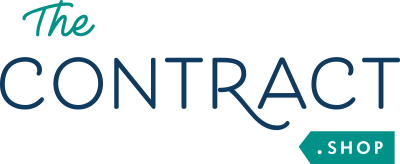Your Cart is Empty
Shop confidently - 14-day no-hassle return policy
Shop confidently - 14-day no-hassle return policy
Shop confidently - 14-day no-hassle return policy
Coaches can specialize in a broad range of areas, from business to tuition, personal development to counseling, and sports to entrepreneurship–but all can benefit from using legal templates for coaches to draft valid contractual agreements.
We’ll work through the five aspects every coach should utilize, regardless of their focus area, from goal setting to evaluating progress and following the stages and phases of a coaching engagement set out within their client contracts and session agreements.
Great coaches have a specific skill set and share their knowledge and abilities with their clients to help them develop, grow, and succeed. However, they don’t simply ‘teach’ in the conventional sense but help to transfer their talent to the client by showing them how to build strategies, approaches, and plans.
What is a coaching session agreement? This document solidifies a commitment from the coach and client to follow a pattern for each session, breaking down big targets and goals into bite-size segments and choosing how to schedule those subjects in a logical way to make steady progress.
Using this system, backed by a formal contractual agreement, means that a coach manages expectations and introduces a systematic method where the client isn't overwhelmed all at once but appreciates how each stage is contributing towards their overall targets.
So, what are the legal concerns of coaches, and why do they need a contract if they have a session agreement? Liabilities, conflicts, and claims are always a possibility in any professional field. A contract protects the coach from disagreements or misunderstandings by setting out the service they intend to provide, and for what fee, right from day one.
Next, we’ll work through those five steps, which can help clarify the journey the coach needs to take their client on to achieve their aspirations.
The very first step is for a coach to define the client's purpose–do they want to improve strengths, prepare for a new career, or change the way they manage problems? By establishing how a client would define success and exactly what they'd like to achieve, a coach can start to formulate a plan and timeframe to get them there.
A coach must understand where their client is starting from to be able to help, getting to grips with their situation and position, or uncovering some of the underlying weaknesses or areas to work on that will support those bigger goals. During an assessment consultation, a coach might engage in conversations about self-discovery or thought processes to unpick the best approach for the individual.
Coaches turn consultations and assessments into action plans, which means they take everything they have learned and develop a series of smaller, achievable aims that collectively will create a foundation for growth. Targets should be measurable and broken down into as many steps as necessary.
Depending on the type of coaching, they will normally need to share their observations and thoughts, focusing on positivity and genuine insights. Feedback should be based on facts, suggestions, and the knowledge of the client’s aims, giving them support to ensure they remain self-aware and can see how behaviors might change outcomes in the future.
Finally, a coach will typically support a client as they put everything they have learned into practice, recognizing and celebrating wins, discussing things that haven't worked, and continuing to monitor progress as necessary.
Kevin Gallagher is the CEO of The Contract Shop®, a contract template store for creative entrepreneurs, freelancers, coaches, and more. His background is in helping online businesses grow, having previously worked at Allbirds managing part of their operations. He is proud to report that his digital artist wife Mandy is a happy customer of The Contract Shop®, and his main motivation is to help as many people like her as possible with the tools that they need to confidently manage their businesses.
Comments will be approved before showing up.
